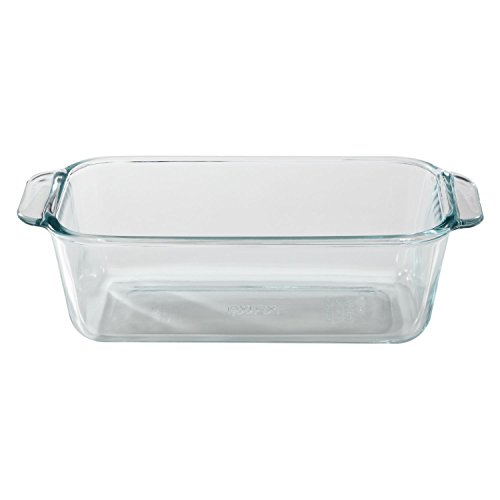Take a trip back in time with a super simple recipe for traditional brown bread. This isn’t just any bread, though—it’s a piece of history you can bake right in your kitchen, filled with a hearty warmth, a rich, nutty flavor, and whole grains. People have been making it for centuries, and now it’s your turn to keep the tradition alive.
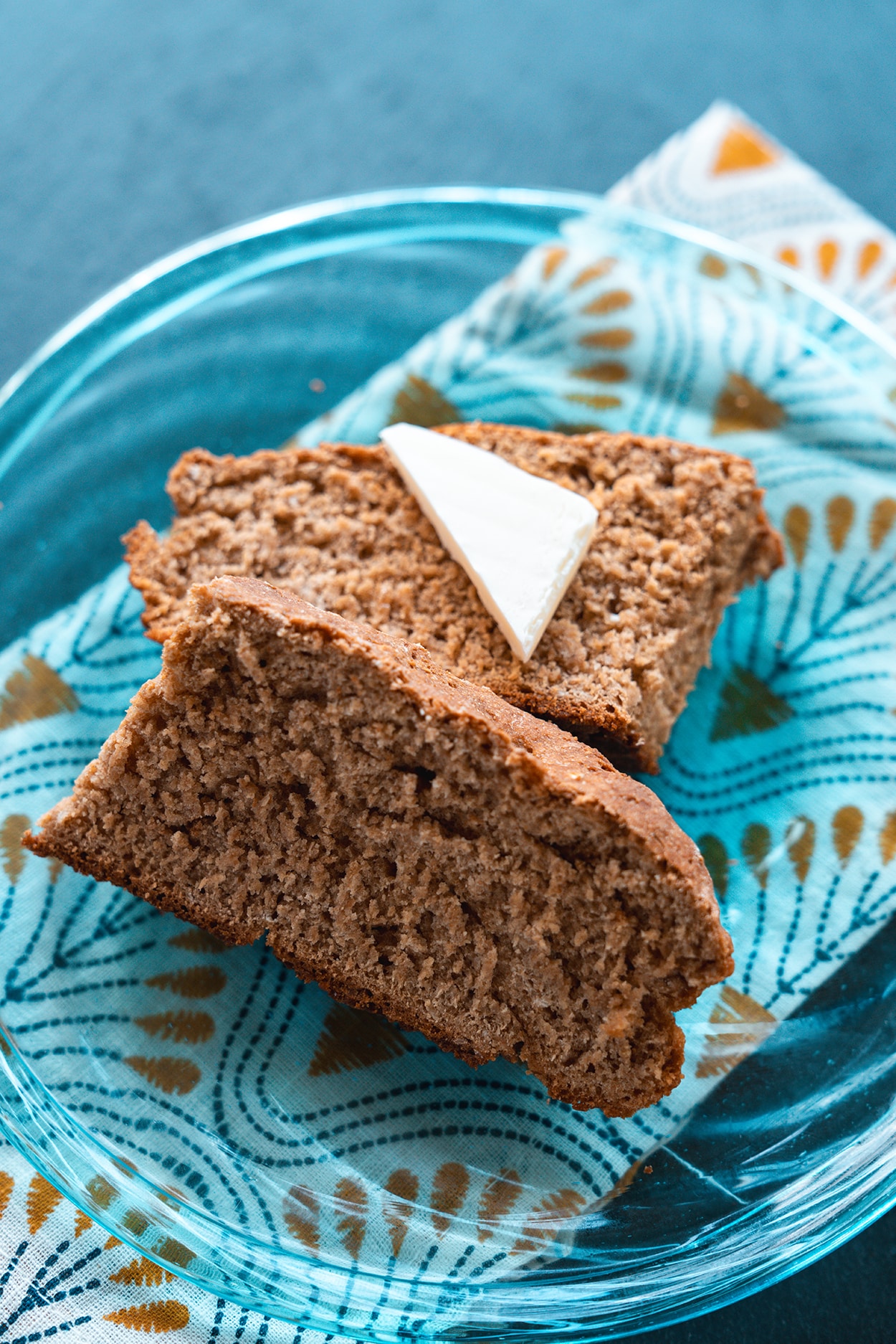
Irish Brown Bread is More Than Just Bread
Ever wonder about the story behind the warm, hearty slice of Irish brown bread? It’s more than just a delicious side to your soup on a rainy day on a trip to Ireland, or the perfect partner to a slab of butter with a Guinness steak and ale stew.
Irish brown bread is a journey through Ireland’s past, filled with tradition, simplicity, and the comfort of home.
Long ago in Ireland, grocery stores weren’t a thing. People relied on simple ingredients and recipes passed down through generations. Brown bread was made with basic, wholesome ingredients like wholemeal flour, baking soda, salt, and buttermilk, making this bread a daily staple.
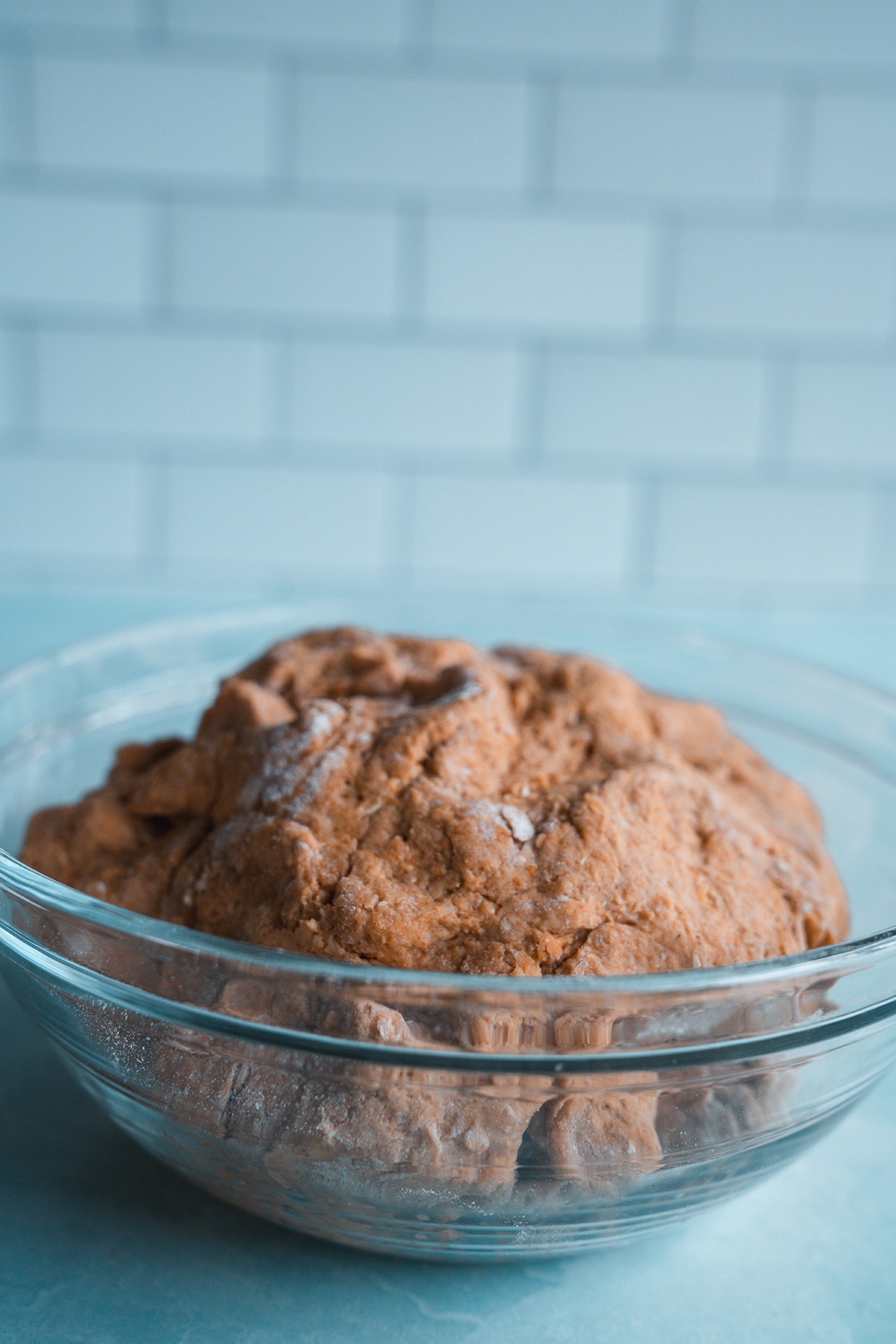
Why? Because it was nutritious, filling, and, most importantly, easy to make over an open hearth or in a small cottage oven.
Irish brown bread isn’t just about sustenance though; it’s a symbol of Irish hospitality and warmth. This bread ties back to times when sharing what little you had was a sign of friendship and community.
Through famines, hardships, and changes in society, Irish brown bread remained a constant in the lives of the Irish people. It was a comforting reminder of resilience and the ability to make do with what the land provided.
Now, Irish brown bread is enjoyed not only in Ireland but around the world. It connects us to a simpler time and brings the rich history and culture of Ireland to our tables.
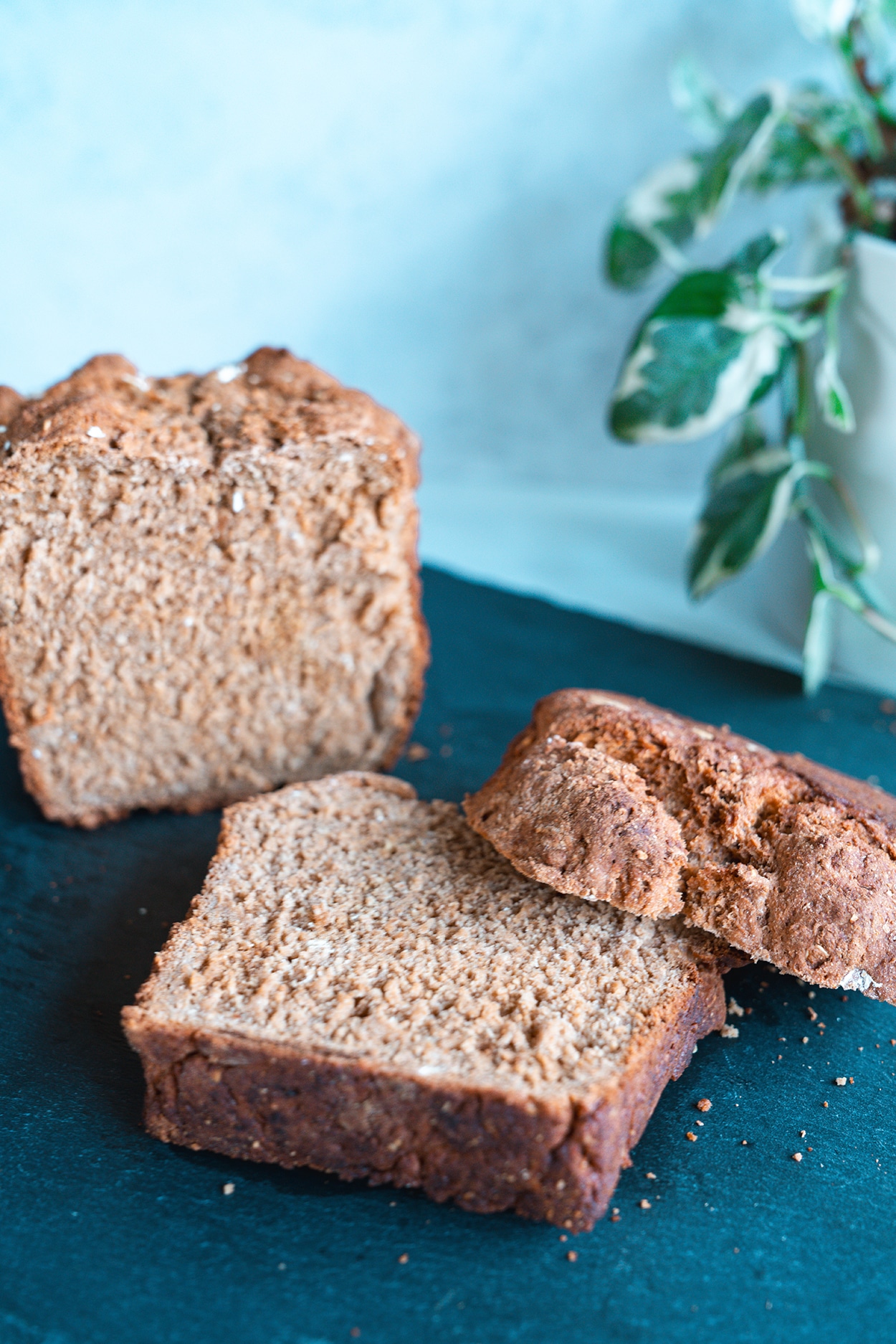
Irish Brown Bread Recipe
Ingredients
- 2 1/2 cups stone-ground whole wheat flour
- 1 cup unbleached all-purpose flour
- 1/2 cup rolled oats (do NOT use quick oats) grind in blender
- 3 tablespoons wheat germ or wheat bran (optional)
- 2-3 tablespoons molasses
- 1 teaspoon baking soda
- 1 ½ teaspoons kosher salt
- 1 ½ cups buttermilk
- ½ cup Guinness beer
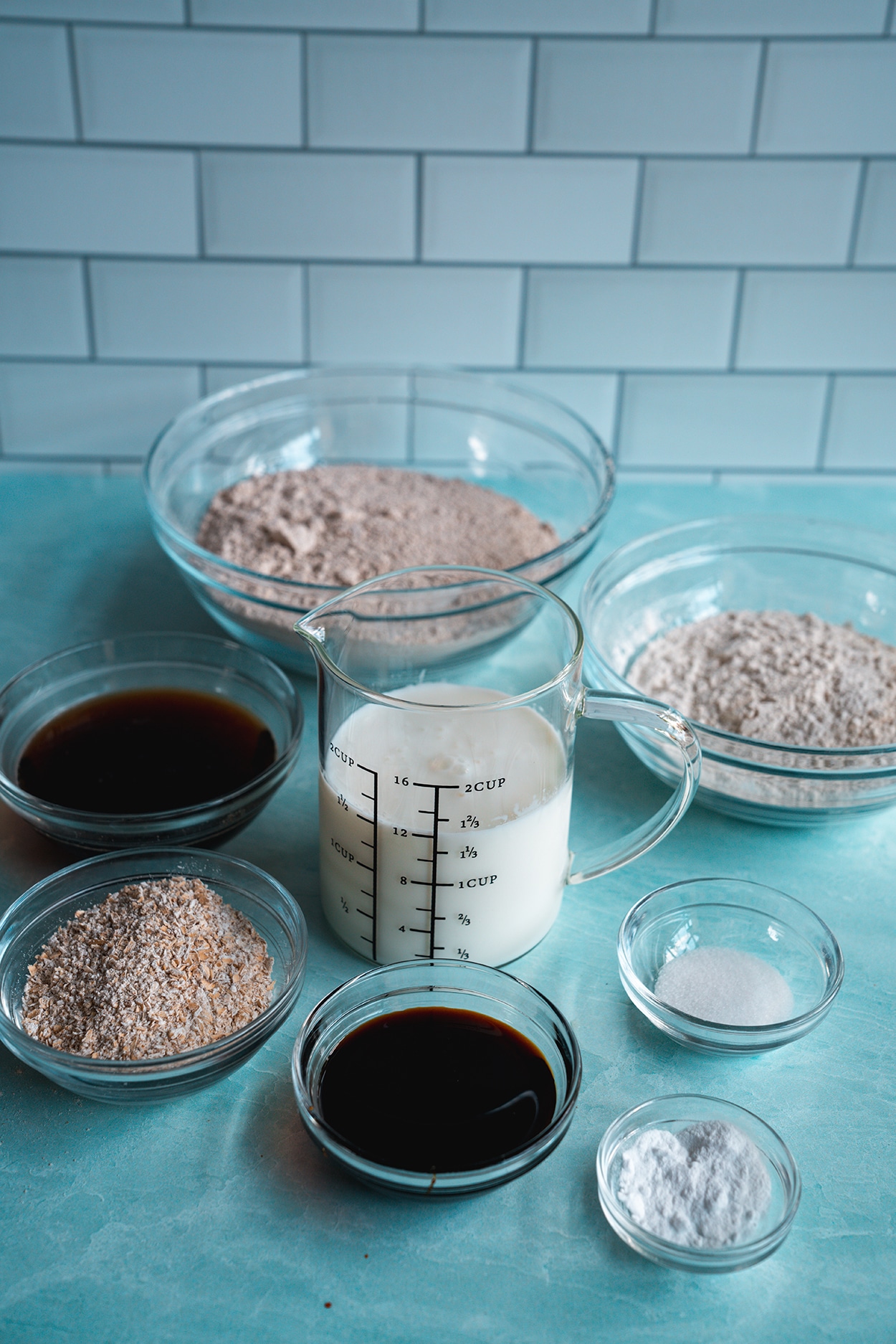
Instructions by Baking Container (Skillet vs. Bread Pan)
Skillet Bake (preferred method)
- Preheat the oven to 450°F (232° C)
- Prepare a 10-inch cast iron skillet and coat with butter or cooking spray. (I prefer butter- see baking instructions below)
- In a large bowl, stir together the stone-ground wheat flour, all-purpose flour, ground up rolled oats, wheat germ, baking soda, and salt.
- Make a well in the middle of the dry ingredients.
- Add the buttermilk, Guinness and molasses to the bowl.
- Stir the ingredients until you have a sticky dough (if the dough is too dry and crumbly, add a little buttermilk– one tablespoon at a time– until the dough just comes together.)
- On a lightly floured surface, carefully knead the dough about five times to bring it together. Don’t over mix.
- Press the dough into the skillet, making sure it reaches the sides.
- Bake according to instructions below.
Skillet Baking INstructions
- Add 2 tablespoons of butter to your skillet and heat. Once the butter has melted, carefully swirl it around so it coats the entire pan, including the edges.
- Shape the dough into a round disc and place into the skillet.
- Press the dough into all of the corners of the pan (carefully, as the pan is hot). Your dough will not be pretty and smooth. That is OK. This is a rustic bread and should look rustic.
- Use a knife to cut X across the top of the dough, then puncture each of the four sections to help air escape as it bakes.
- Bake the dough for 15 minutes at 450° F
- REDUCE the temperature to 400° F and bake the bread for another 20-25 minutes.
- The bread is done when you can tap the bottom of your loaf and you hear a hollow sound OR you can just use a baking thermometer. The internal bread temperature should be 180° F – 200° F when your bread is done.
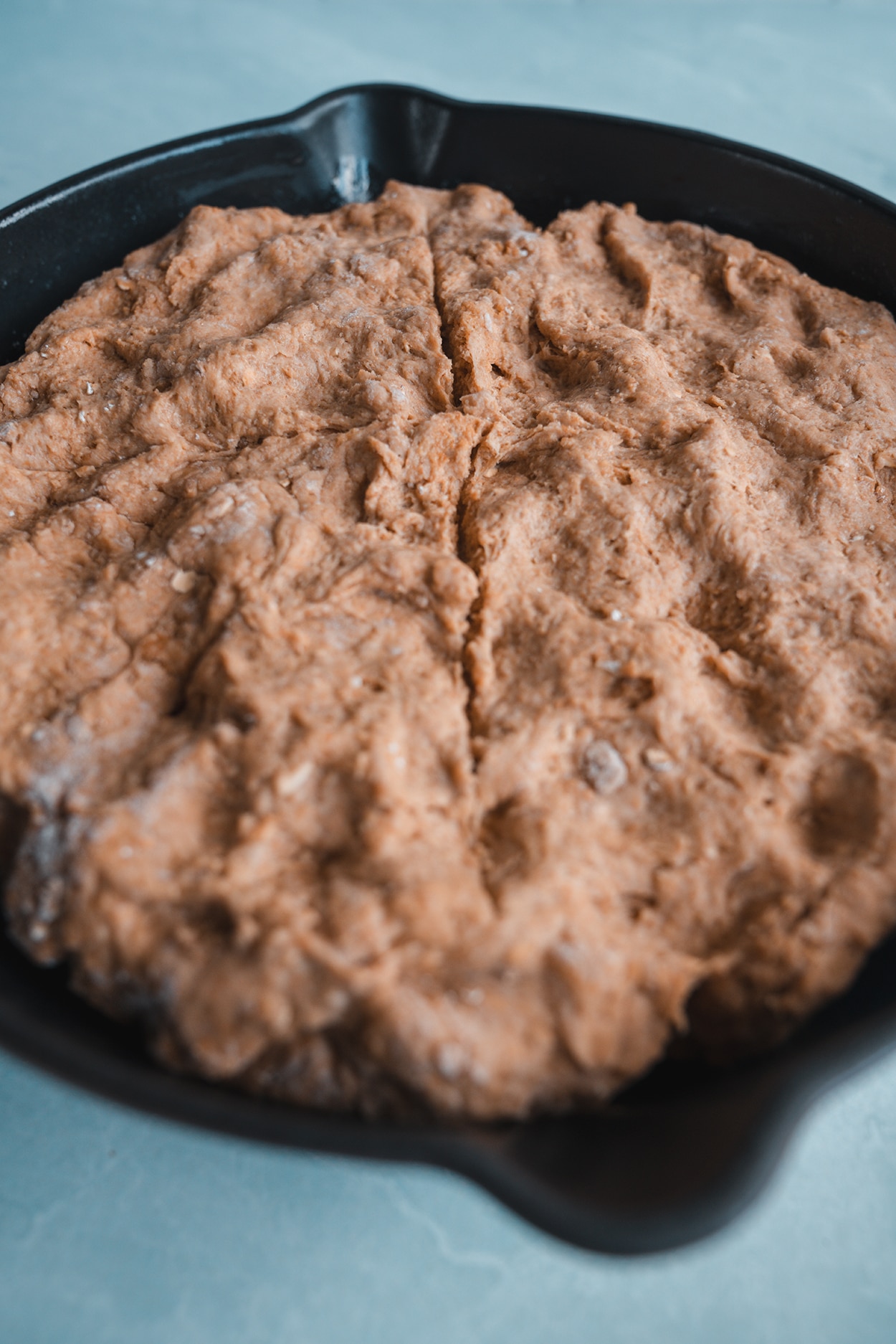
Bread Pan Bake (alternate method)
- Preheat the oven to 450°F (232° C)
- Line the bottom of the loaf pan with parchment paper.
- Spray the pan with cooking spray (olive oil spray) or melted butter, coating the corners well.
- In a large bowl, stir together the stone-ground wheat flour, all-purpose flour, ground up rolled oats, wheat germ, baking soda, and salt.
- Make a well (hole) in the center of the dry ingredients
- Add the buttermilk, Guinness and molasses to the “well” in the bowl.
- Stir until you have a sticky dough (if the dough is too dry and crumbly, add a little buttermilk–one tablespoon at a time–until the dough just comes together.
- On a lightly floured surface, carefully knead the dough about five times to bring it together. Don’t over mix.
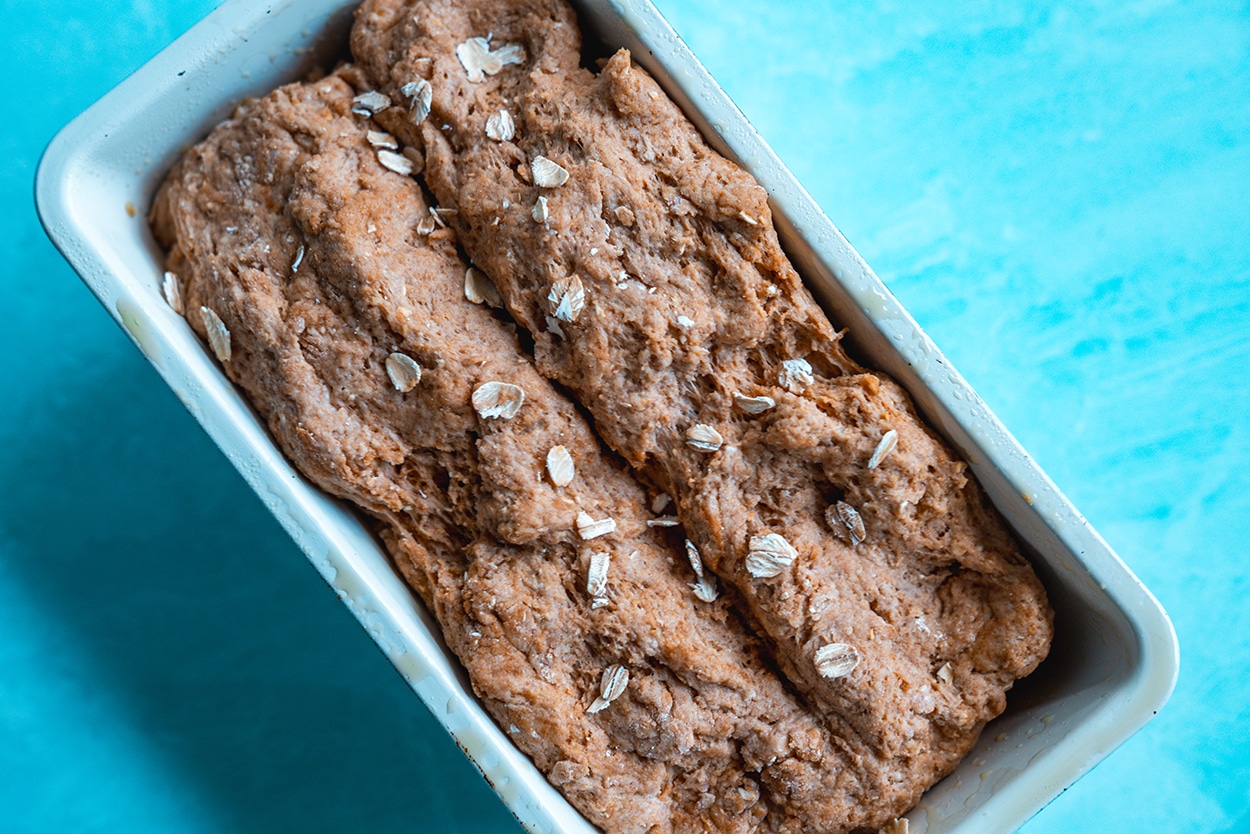
Baking the Bread Loaf Pan Bread
- Bake the dough for 15 minutes at 450° F
- Reduce the temperature to 400° F
- Lightly cover the top of your bread pan with aluminum foil to stop the top from getting too brown.
- Bake the bread for another 35-40 minutes. Once done you should hear a hollow sound when you tap the bottom and the internal temperature is 180° F – 200° F.
Remove the baked bread and place on a wire rack to cool for at least 25-30 minutes. Don’t worry, just like a skillet bread, you will still have warm bread, if you allow it to cool.
Why I love this bread
I’ve made a LOT of brown bread to get my recipe to this point. I’ve added more or less molasses, honey, and brown sugar, rolled oats whole and ground up, wheat germ and no wheat germ, but this recipe gives me that savory/sweet combo I adore.
It brings me back to the pub in Doolin, Ireland (shout out to Gus O’Connors!), where we would end each day with steak and ale stew over mashed potatoes, and a side of brown bread, plus a Guinness (or for me, a gin and tonic with Dingle gin, and juice for the kids).
I’m happy eating this bread right out of the oven with a slab of salted butter, but I also pick up a slice plain to munch on as I walk back to my desk.
Heck, you can even use it for sandwiches if you like. Just remember, this is a rustic bread, so enjoy the love that went into make it.
Oh, and this is a great bread recipe to make with your kids. Since there is no yeast, there is no waiting, which is great for impatient little stomachs.
Traditional Irish Brown Bread Recipe
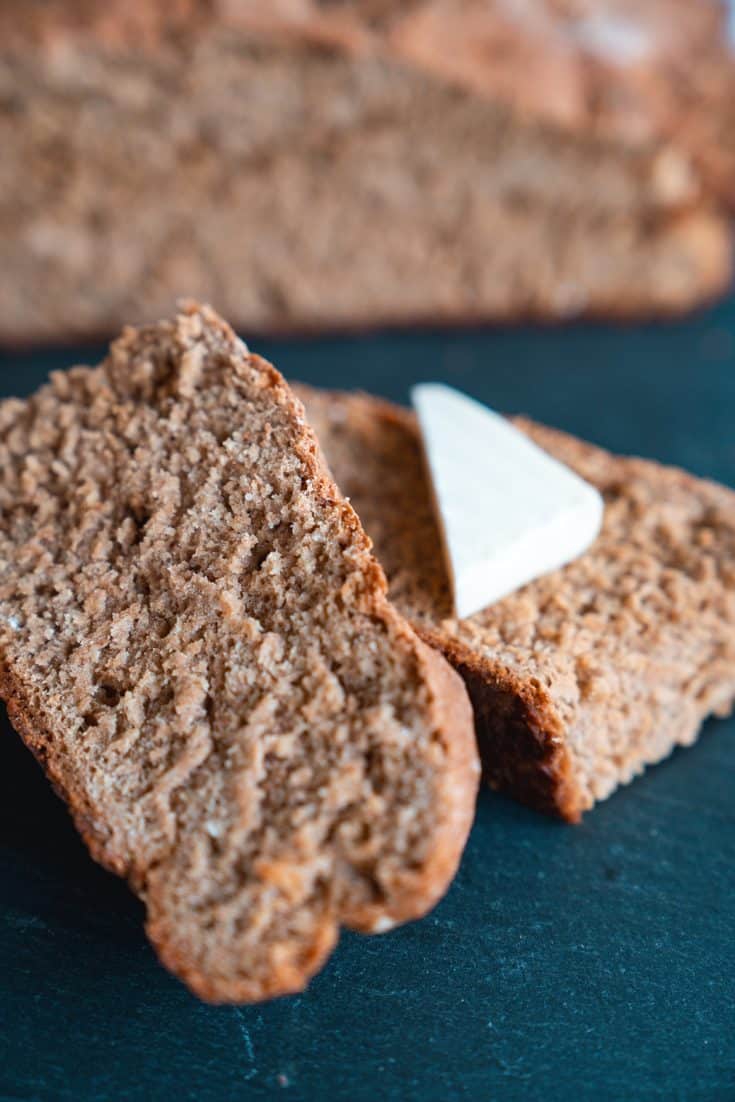
Take a trip back in time with a super simple recipe for traditional brown bread. This isn't just any bread, though—it's a piece of history you can bake right in your kitchen, filled with a hearty warmth, a rich, nutty flavor, and whole grains. People have been making it for centuries, and now it's your turn to keep the tradition alive.
Ingredients
- 2 1/2 cups stone-ground whole wheat flour
- 1 cup unbleached all-purpose flour
- 1/2 cup rolled oats (do NOT use quick oats) - ground in blender
- 3 tablespoons wheat germ or wheat bran (optional)
- 2-3 tablespoons molasses
- 1 teaspoon baking soda
- 1 ½ teaspoons kosher salt
- 1 ½ cups buttermilk
- ½ cup Guinness beer
Instructions
Instructions by Baking Container (Skillet vs. Bread Pan)
Skillet Bake (preferred method)
- Preheat the oven to 450°F (232° C)
- Prepare a 10-inch cast iron skillet and coat with butter or cooking spray. (I prefer butter)
- In a large bowl, stir together the stone-ground wheat flour, all-purpose flour, ground up rolled oats, wheat germ, baking soda, and salt.
- Make a well in the middle of the dry ingredients.
- Add the buttermilk, Guinness and molasses to the bowl.
- Stir the ingredients until you have a sticky dough (if the dough is too dry and crumbly, add a little buttermilk-- one tablespoon at a time-- until the dough just comes together.)
- On a lightly floured surface, carefully knead the dough about five times to bring it together. Don’t over mix.
- Press the dough into the skillet, making sure it reaches the sides.
- Bake according to instructions below.
Bread Pan Bake (alternate method)
- Preheat the oven to 450°F (232° C)
- Line the bottom of the loaf pan with parchment paper.
- Spray the pan with cooking spray (olive oil spray) or melted butter, coating the corners well.
- In a large bowl, stir together the stone-ground wheat flour, all-purpose flour, ground up rolled oats, wheat germ, baking soda, and salt.
- Make a well (hole) in the center of the dry ingredients
- Add the buttermilk, Guinness and molasses to the "well" in the bowl.
- Stir until you have a sticky dough (if the dough is too dry and crumbly, add a little buttermilk--one tablespoon at a time--until the dough just comes together.
- On a lightly floured surface, carefully knead the dough about five times to bring it together. Don’t over mix.
- Bake according to instructions below.
Baking the Bread
- Bake the dough for 15 minutes at 450° F
- Reduce the temperature to 400° F
- Lightly cover the top of your bread pan with aluminum foil to stop the top from getting too brown.
- Bake the bread for another 35-40 minutes. Once done you should hear a hollow sound when you tap the bottom and the internal temperature is 180° F - 200° F.
Remove the baked bread and place on a wire rack to cool for at least 25-30 minutes. Don’t worry, you will still have warm bread, but the texture will be better if you allow it to cool and “set.”
Recommended Products
As an Amazon Associate and member of other affiliate programs, I earn from qualifying purchases.
-
Pyrex 1.5-Quart Clear Basics Glass Loaf Pan (Set of 2)
-
Lodge Cast Iron Loaf Pan 8.5x4.5 Inch
-
Guinness Extra Stout, 6pk, 11.2 Fl Oz bottles, 5.6 % ABV
-
Cult Buttermilk Powder
-
Plantation Blackstrap Molasses, 15 oz
-
Bob's Red Mill Wheat Germ, 12 Ounce
-
Bob's Red Mill Whole Wheat Flour - 5 lb
-
Lodge 10.25 Inch Cast Iron Pre-Seasoned Skillet – Signature Teardrop Handle - Use in the Oven, on the Stove, on the Grill, or Over a Campfire, Black
-
KitchenAid® 7 Quart Bowl-Lift Stand Mixer, Cast Iron Black
Nutrition Information:
Yield:
8Serving Size:
1Amount Per Serving: Calories: 277Total Fat: 2gSaturated Fat: 1gTrans Fat: 0gUnsaturated Fat: 1gCholesterol: 2mgSodium: 486mgCarbohydrates: 57gFiber: 8gSugar: 8gProtein: 11g
All information and tools presented and written within this site are intended for informational purposes only. I am not a certified nutritionist and any nutritional information on twisttravelmag.com should only be used as a general guideline. This information is provided as a courtesy and there is no guarantee that the information will be completely accurate. The nutritional labels are a product of online calculators, such as Calorie Count. Even though I try to provide accurate nutritional information to the best of my ability, these figures should still be considered estimates.


